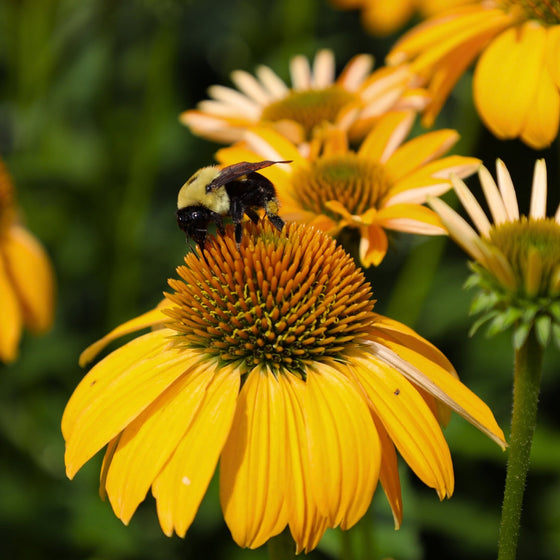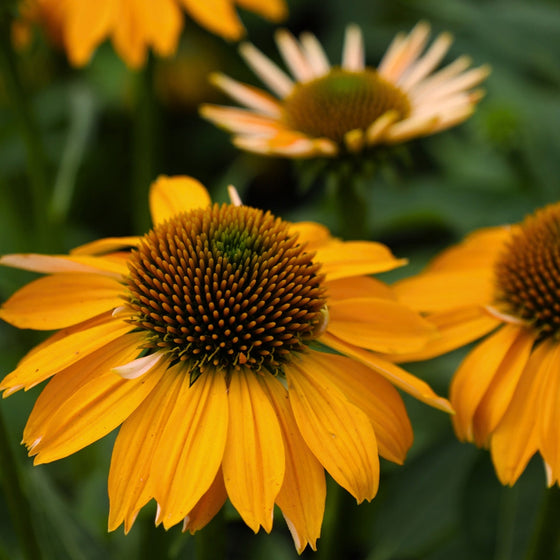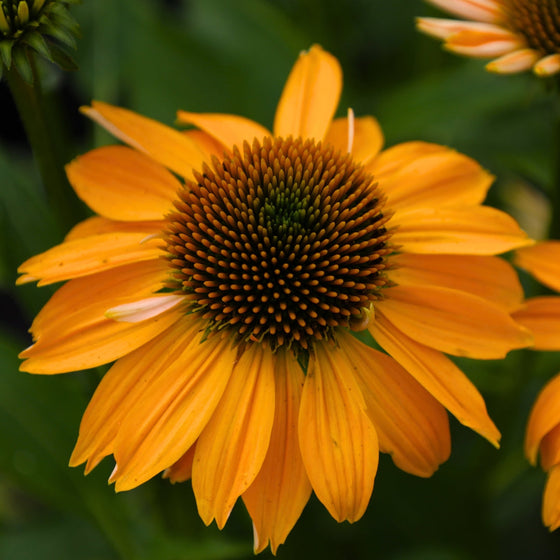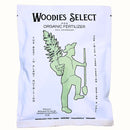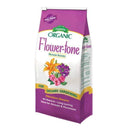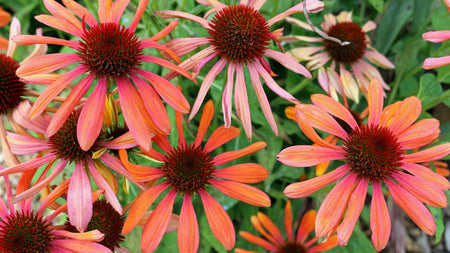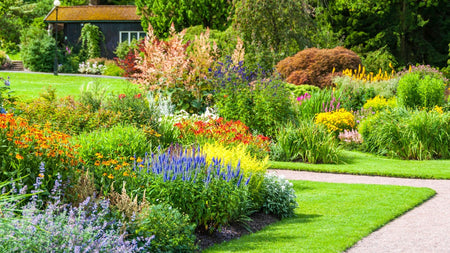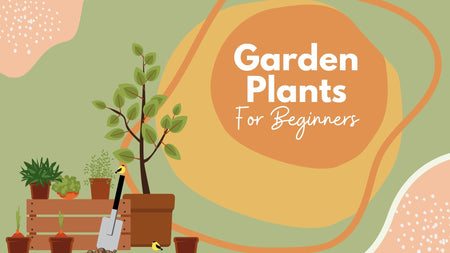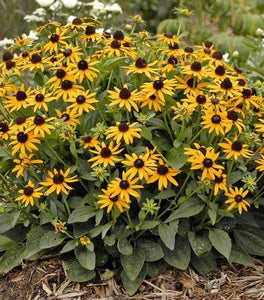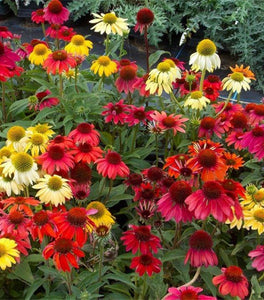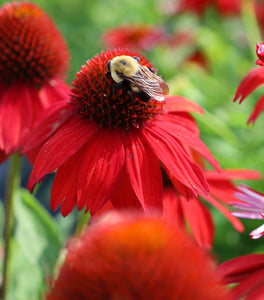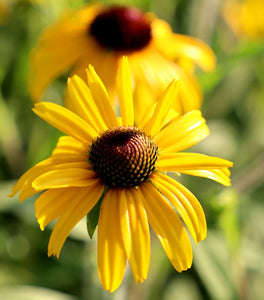
Images Depict Mature Plants
Echinacea Sombrero® Granada Gold – Compact Yellow Coneflower for Pollinator Gardens
Bring sunshine and resilience to your garden.
The Echinacea Sombrero® Granada Gold Coneflower delivers bold golden-yellow blooms that light up the landscape from early summer through fall. This compact perennial is part of the Sombrero series—known for heavy blooming, strong stems, and exceptional garden performance. Its radiant color and tidy form make it a standout in borders, containers, and pollinator gardens alike.
A Compact Coneflower, vibrant performance.
Growing just 18 to 22 inches tall and wide, Granada Gold fits beautifully into small gardens and mixed perennial plantings. Its strong stems hold up its large, daisy-like blooms even during summer storms, while the vibrant color maintains intensity throughout the season. Whether you’re planting it in clusters or combining it with other Echinacea varieties, this variety adds both structure and cheer to any sunny space.
Built for pollinators and built to last.
Sombrero Granada Gold Echinacea attracts butterflies, bees, and hummingbirds, providing essential nectar during peak summer heat. Once established, it’s both deer-resistant and drought-tolerant, thriving in full sun and average, well-drained soil. Its sturdy habit means it never needs staking, and the blooms continue well into fall—offering vibrant color when many perennials are past their prime.
Easy-care color for every garden.
Perfect for both home gardeners and landscape professionals, Granada Gold combines brilliant color with easy maintenance. It’s ideal for container displays, mass plantings, or pollinator-friendly gardens where reliability, hardiness, and long-lasting bloom are key. Add this golden treasure to your garden for years of carefree color and performance.
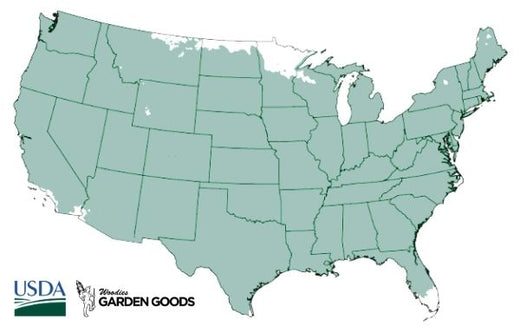
| Hardiness Zone: | 4-9 |
|---|---|
| Mature Height: | 18 to 22 Inches |
| Mature Width: | 18 to 22 Inches |
| Sunlight: | Full sun |
| Water Requirements: | Average |
| Bloom Time | Summer |
| Selling Points: | Long-blooming; fragrant; attracts butterflies and pollinators |
How to Care for Echinacea Sombrero Granada Gold
Be sure to read our planting instructions to ensure a healthy and happy Granada Gold Echinacea plant for years to come!
How should I plant Echinacea Sombrero Granada Gold?
Choose a full-sun location with well-draining soil. Dig a hole twice as wide as the root ball and just as deep, positioning the plant so the crown sits level with the soil surface. Backfill gently, firm the soil, and water thoroughly. Echinacea prefers drier conditions once established, so avoid planting in areas prone to standing water. Adding mulch around the base helps retain moisture during establishment and protects the roots during winter.
How often should I water Echinacea Sombrero Granada Gold?
Water newly planted Echinacea about once a week during the first growing season, ensuring the soil stays slightly moist but not saturated. Once established, Sombrero Granada Gold is drought tolerant and needs little supplemental watering except during extended dry spells. Allow the soil to dry between waterings to prevent root rot. Over time, this variety develops a deep root system that allows it to thrive even in hot, dry summers—making it perfect for low-maintenance gardens.
How do I fertilize Granada Gold Echinacea?
Fertilize once in early spring using a balanced slow-release fertilizer or a topdressing of compost. Echinacea doesn’t need heavy feeding—too much nitrogen can actually reduce blooms. Regularly replenishing the soil with organic matter each spring helps maintain steady growth and promotes abundant flowering. For best results, avoid over-fertilizing and focus on providing good sunlight and drainage.

How and when should I prune or deadhead Sombrero Granada Gold?
Deadhead spent blooms throughout the season to encourage continuous flowering. This helps keep your plant tidy and promotes fresh blooms into fall. In late fall or early spring, cut the stems back to about 3 inches above the soil line. Alternatively, leave the seed heads standing through winter to provide visual interest and food for birds.

